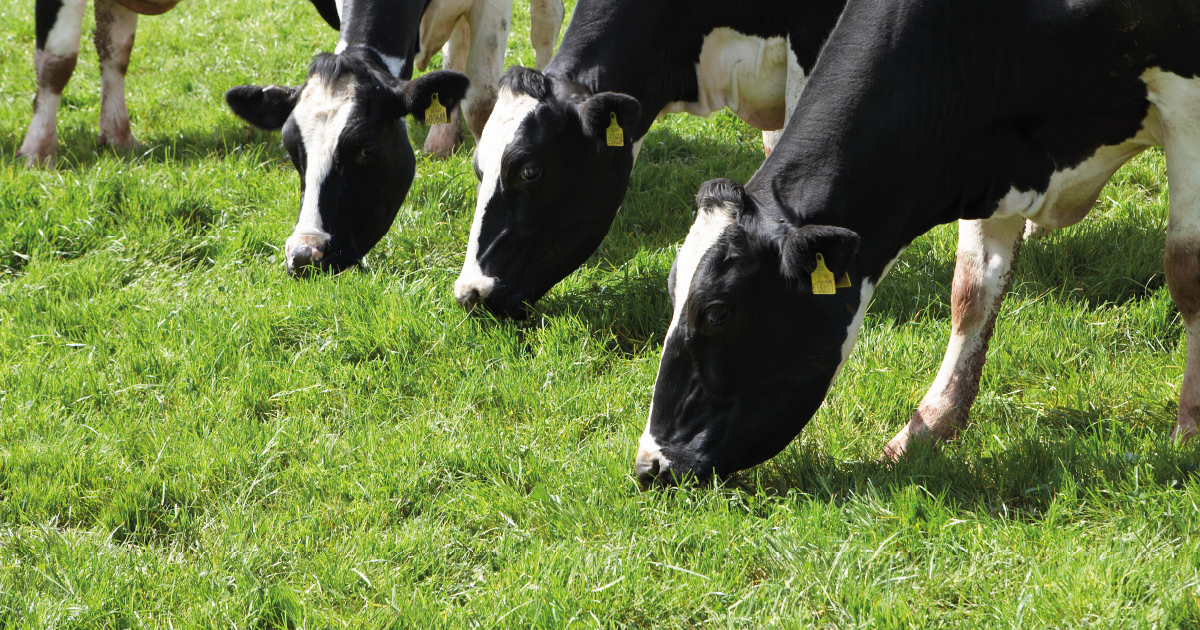With huge scope to maximise productivity from forage, Wynnstay has launched a new Forage4Profit campaign, which is designed to support farmers to improve meat or milk from forage.
The 2022 Kingshay report indicates that the average milk from forage on UK dairy farms is 2,900 litres, showcasing that there is huge scope for improvement, with some of the best farms reaching over 5,000 litres.
Read more
Posted in Dairy Farming, Beef Farming, Sheep Farming, Dairy Feed, Beef Feed, Grass Seed and Silage Advice
With the onset of winter rapidly approaching and grass quality decreasing, Wynnstay’s beef and sheep manager, Bryn Hughes, advises farmers to plan ahead for housing cattle over winter.
Read more
Posted in Beef Farming, Beef Housing and Beef Feed
Forage4Profit is a 4-point plan to help livestock farmers maximise the quality of homegrown forage and improve milk or meat from forage.
In this blog we look at the 4 factors to help improve milk from forage this season.
The amount of milk produced from forage averages just 2,900 litres nationally, figures from Kingshay’s cost report from December 2022 show. There is huge scope to improve this and reduce purchased feed costs, with the best farms achieving 5,300 litres of milk from forage.
Every 1,000 litres of milk from forage equates to approximately 460kg of concentrate feed, and so by increasing homegrown forage quality, it's essential to maximise homegrown to make the most efficient use of purchased feed.
Read more
Posted in Dairy Farming, Beef Farming, Sheep Farming, Dairy Feed and Beef Feed
Sustainability is a key part of our business, with our mission being to help farmers feed the UK in a more sustainable way. As a business, we are working towards becoming carbon net zero and aim to support our customers with products and services that help drive sustainability and efficiencies. Through our feed division we have made the following commitments:
Read more
Posted in Dairy Farming, Beef Farming, Sheep Farming, Dairy Feed, Beef Feed and Environment & Sustainability
Congratulations to the Albutt Family of Winchcome who recently won our January prize draw in conjunction with QLF. The family chose the prize of an IBC of L-CBF BOOST as they already use QLF Allstock Lite molasses.
Read more
Posted in Dairy Farming, Sheep Farming, Dairy Feed and Beef Feed
Recent silage analysis from across the country has show variation in nutrient analysis, this may pose feeding challenges to farmers this Autumn and consideration needs to be given to balancing the ration to optimise rumen health and maintain performance
Read more
Posted in Dairy Farming, Dairy Feed and Beef Feed
When it comes to producing good quality, nutritious silage small things can make a big difference. This is especially true of mistakes. A shortcut or a small oversight can ultimately result in silage that is unusable due to insufficient dry matter content or worse, silage that is dangerous to herd health because of mould growth and the likely presence of mycotoxins or Listeria.
Many farmers have come to accept some issues, particularly with mould, as inevitable and as a necessary evil. The reality is however, it's all too often caused by someone committing one of a number of silage "sins".
Read more
Posted in Dairy Feed, Beef Feed and Silage Advice
For cost-effective weed control in root crops the emphasis must be placed on pre-emergence application of herbicides. Every year we receive a large number of calls from concerned growers who have applied no herbicide at all and who are concerned that their root crop is disappearing under a sea of weeds. By this point, it is usually too late to save the crop!
Read more
Posted in Dairy Feed, Beef Feed and Weed Control
It’s been a difficult season to say the least! The drought of 2018 has had a drastic effect on forage stocks which have been reserved for winter feeding with Dry Matter (DM) yields of grass on farm estimated to be down up to 50% compared to 2017.
Read more
Posted in Dairy Farming, Beef Farming, Dairy Feed and Beef Feed
Maize silage and crimped maize grain are used throughout the UK to efficiently feed beef cattle. Maize isn’t a suitable crop for growing in all parts of England as it is dependent on farm location, soil type, altitude and field aspect for good results. These variables must be analysed and considered carefully before deciding whether or not to grow the crop.
Read more
Posted in Beef Farming, Crop Farming & Harvest, Catch & Forage Crops and Beef Feed









